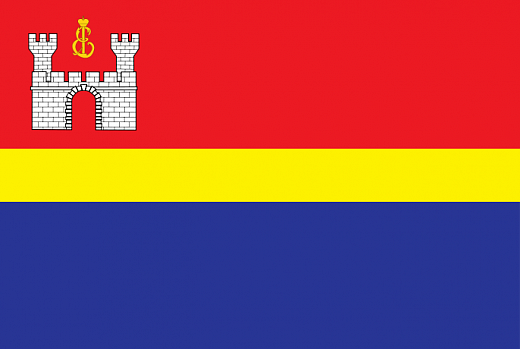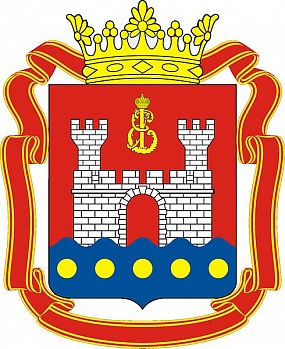 Калининградская область
Калининградская область
Information about Kaliningrad Region
Date of Foundation
The Kaliningrad Region was founded as a result of the Potsdam Agreement, 1945. In accordance with the latter the Northern part of East Prussia – 1/3 – was awarded to the USSR and transformed into the Konigsberg Special Military District with Konigsberg as a major city. The Konigsberg Region was established by the Decree of the USSR Supreme Soviet Presidium on April 7, 1946, and became part of the RSFSR on July 4, 1946. Later the region changed its name after Soviet official M. Kalinin.
Geographical Location
The Kaliningrad Region is situated on the southeastern coast of the Baltic Sea. It is fully separated from the Russian mainland by borders with foreign countries. In the south it borders with Poland, in the north and east - with Lithuania. The west coast is washed by the Baltic Sea including the Curonian and Kaliningrad (Vistula) Lagoons with an area of Russian parts as 1.3 and 0.5 thousand square kilometres respectively.
The region belongs to the zone of mixed forests that make up 15% of the territory. Kaliningrad flora and fauna are rich comprising 1300 plant species, 400 species of vertebrates, 160 species of birds, and 100 species of fish. There are extracted amber, petroleum, salt, and peat in the region. 90% of world opencast amber mining is carried out here.
Federal District
It is a part of Northwestern Federal District.
Area
The total area of the region including the lagoons is 15.1 thousand km2, the land area is 13.3 thousand km2. Maximum east-west extent is 205 km, north-south width is 108 km. Most of the territory is lowland. In the South-East, the Baltic Upland (either Vishtynets or Vištytis Upland) reaches up to 240 m.
Population
As of January 1, 2023, the Kaliningrad Region resident population made up 1,032,343 that is 1364 more than the last period figure of 1,032,979 people. In 2023, migration growth amounted to 6,227 fully compensating for natural loss.
Major Cities
Administrative centre: Kaliningrad (population as of January 1, 2023, - 498,000). Other major cities are Sovetsk, Chernyakhovsk, Baltiysk, Gusev. There have been 22 municipalities since 2019.
Public authorities are divided into executive (the Government of the Kaliningrad Region headed by governor A. Alikhanov), legislative (the Kaliningrad Legislative Assembly (formerly the Kaliningrad Regional Duma) headed by A. Kropotkin), and judicial (the Regional Court headed by E. Bykov).
Current Official symbols (coat of arms and flag) are approved by Law 16 of the Kaliningrad Region of June 9, 2006.
Ethnic Diversity
147 ethnic groups reside in the Kaliningrad Region. Among the largest of them there are Russians (86.4%), Ukranians (3.7%), Belarussians (3.6%), Lithuanians (1.1%), Armenians (1%), Germans (0.8%), Tatars (0.5%), Azerbaijanis (0.4%), Poles (0.3%), Uzbeks (0.3%), Kazakhs (0.08%).
Economic and Social Development of the Kaliningrad Region
Political and socio-economic situation is stable. The Kaliningrad Region develops in accordance with a medium- and long-term strategy that stipulates the following priorities:
- industrial and automotive manufacturing;
- ship building;
- amber processing;
- agriculture and fish industry;
- tourism industry;
- innovation and hi-tech industries.
Since January 1, 2018, up to December 31, 2045, a new simplified tax regime model of the Special Economic Zone (SEZ) is in effect. As of February 2024, the Unified Register of SEZ Residents comprises 316 companies with declared investment of 204.9 bln roubles – compared to the previous period with 176.6 bln – and 55,000 employees – 50,479 earlier. 56 projects fall on 2023. There are 52 international companies in the Special Administrative Region (SAR) on Oktyabrsky Island, Kaliningrad. In 2022-2023 the SAR members made more than 30 bln roubles investment.
Industrial Production
The period between January and November 2023 saw a decrease of industrial production index by 7% against the same period of 2022.
Well-grounded expectations are focused on new Rosatom-led Li-ion battery plant. At the same time, Encore solar battery plant became the first in Chernyakhovsk Industrial Park. The park also houses Atlantis company that grows and produces premium French fries and other frozen goods.
Main industrial companies are the following:
1. Avtotor Plant produces Chinese car brands Kaiyi Auto, BAIC, SWM, JMC, Dongfeng as well as local China-designed Amberauto.
2. Yantar Shipyard repairs and builds modern warships and other high-performance vessels.
3. Lukoil Kaliningradmorneft produces oil and gas and develops the fields.
4. Baltinox produces stainless steel tubes.
5. Baltkran supplies lifting equipment and complex crane systems for container terminals, ports, nuclear plants, and thermal power stations.
Mineral Extraction
The Kaliningrad Region mineral base includes fields of oil, amber, peat, sand and gravel, clay, fresh and mineral water, therapeutic mud, potassium salt, rock salt, brown coal.
In January-July 2023, oil production made up 171 mln tons, which is 12.31% less than the last year comparable period.
Construction
In January – November 2023, the amount of construction work grew up to 110%. Developers commissioned 1066.5 thousand square metres that equals to 92% of the same period of 2022.
Agriculture
In 2023, grain and leguminous crops harvest made up 625 thousand tons whereas the regional need is 534 tons. In January-November 2023, 116.1 thousand tons of meat were produced which is 3% less than compared to the same period of the previous year. It totally covers the regional need for meat. 218.7 tons of milk is 2% more than previously and covers over 100% of regional need. 306 million eggs are 20% more than previously.
Dolgov Group Agricultural Holding is the largest agricultural enterprise of the Kaliningrad Region with a completely self-contained closed-cycle structure from the field to the counter. It includes plant for deep processing of rapeseed, soybean, and sunflower seed.
Foreign Economic Activity
The Kaliningrad Region is an import-oriented Russian territory. In January-September 2023, the Kaliningrad Region foreign trade turnover made up $5 bln, which is 5.4% less than in 2022. The export value reached 1.675 bln decreasing by 12%, the import value declined by 2% to 3.399 bln. The major partners are China (29.9%), Brazil (14.1%) and Belorussia (9.3%).
Among primary export goods there are food products and agricultural commodities. The main import goods are equipment, ferrous metal products, electrical machinery.
International Cooperation
In the region, there are the Republic of Belarus Embassy Office and three EU consular offices: Lithuania (2) and Poland. The number of consular offices was reduced in response to Russian diplomats’ expulsion. There are also four honorary consuls of the following countries: Croatia, Greece, Italy, Kazakhstan.
Russian-Belorussian Council on the Long-Term Cooperation continues its work as a tool of regional partnership.
25 regional international agreements (memoranda of cooperation, protocols) are valid.
Nevertheless, the region has been frequently used as a venue for international forums. In 2024, Kaliningrad is to host events dedicated to I. Kant 300th anniversary. The World Youth Festival 2024 regional stage took place in this March to unite participant from 40 states including th EU ones, Australia, Africa, and South America.
Science
Science is represented by Shirshov Institute of Oceanology of the Russian Academy of Sciences (RAS), Kaliningrad Agriculture Research Institute of the RAS, the Biological Station of the RAS Zoological Institute, state universities: Kaliningrad Technical University with the Baltic Fishing Fleet State Academy and Immanuel Kant Baltic Federal University.
Educational Structure
Kaliningrad educational structure includes:
- 161 municipal institutions of general education;
- 187 institutions of preschool education;
- 17 institutions of secondary vocational education;
- 12 institutions of higher education (including branches). The major higher education institution is Immanuel Kant Baltic Federal University.
Institutions of Culture and Art
The region has 531 institutions of culture and art, four of which are federal. There are 1251 architectural, historical and cultural monuments including the Curonian Spit National Park, which is on the UNESCO’s Cultural Heritage List.
Besides 6 concert facilities, 252 libraries and a zoo, there are four theatres, 37 children art schools, 14 museums with such major institutions as the Museum of the World Ocean and its vessels moored at the museum quay, the Regional Museum of History and Art with its four branches, the Amber Museum, Kaliningrad Museum of Fine Arts.
The Kaliningrad Region hosts music and theatre festivals “Amber Necklace”, “Musical Spring”, “Kaliningrad City Jazz”, “Baltic Debuts”, “Baltic Seasons” as well as competitions “Amber Nightingale” (chamber vocal), “Mikael Tariverdiev International Organ Competition” (music), “Serenading KiViN” (humour).
The Kaliningrad Region registered four news agencies, 18 radio stations, 15 TV channels, 33 online media, two electronic periodicals, 44 newspapers, 28 magazines.
Transport Infrastructure
Transport infrastructure of the region includes 963 km of railways, more than 4800 km of roads, and 570 km of inland waterways. There are 21 Russian border crossing checkpoints. Border control is conducted at 8 checkpoints (3 road border checkpoints, a railway border checkpoint, 3 sea border checkpoints, Khrabrovo Airport border checkpoint).
What makes Kaliningrad railways unique is tracks of two types that is a standard gauge of 1435 mm from Chernyakhovsk and Kaliningrad (105 km) and 858-km line of 1520 mm to Russian and Polish border checkpoints Mamonovo – Braniewo and Zheleznodorozhy – Skandawa.
Public road network is one of the most well-developed in Russia. Kaliningrad road density is 352 km per 1000 km2 , which is higher than the average Russian level of 67 km per 1000 km2.
The port of Kaliningrad includes sea commercial, sea fishing, and river ports. The Sea Port is the only Russian ice-free Baltic port. Sea border checkpoints are in Kaliningrad, Baltiysk, and Svetly.
In 2023, 24 vessels covered the routes between Kaliningrad and ports of the Leningrad Region, five of which are Ust-Luga – Baltiysk railway ferries: the Ambal, Baltiysk, Ursa Mayor, Marshal Rokossovsky, and General Chernyakhovsky. The latter two vessels became Russia’s first to make unmanned commercial voyages.
In 2023, the Port of Kaliningrad cargo turnover made up about 8.9 mln tons which is 7% more than in 2022. Rosmorport vessels ensure 40% of the total regional traffic.
Nowadays sea transportation between the Kaliningrad Region and “mainland” Russia is crucial for the semi-exclave economy. Most part of local industry is tied to the shipping because of the need for components. Being the key enterprise for the region, Avtotor had to switch over to ferries since September 2023 in order to supply their cars to other Russian regions as a result of sanctions and Lithuanian railway quotas. At the same time, the demand for rolling ferry fleet enlarging is still acute. In 2024-2025, the rolling ferries are to be redirected to the much awaited Port of Pionersky.
Khrabrovo Airport Capacity is up to 5 mln passengers a year. On November 2021, there was introduced the Open Skies Regime of the seventh freedom of air. The Federal Agency for Air Transport authorized reception of Boeing 777 and its versions.
Tourist Potential
Tourist potential builds upon two federal seaside resorts Zelenogradsk and Svetlogorsk, the Curonian Spit National Park, and seven nature reserves.
The MFA of Russia Representative Office in Kaliningrad is located at: 17 Kirova st., 236035, Kaliningrad, Russia. Tel.: +7(4012) 21-37-12, fax: +7(4012) 21-06-26, e-mail: kaliningrad@mid.ru.




